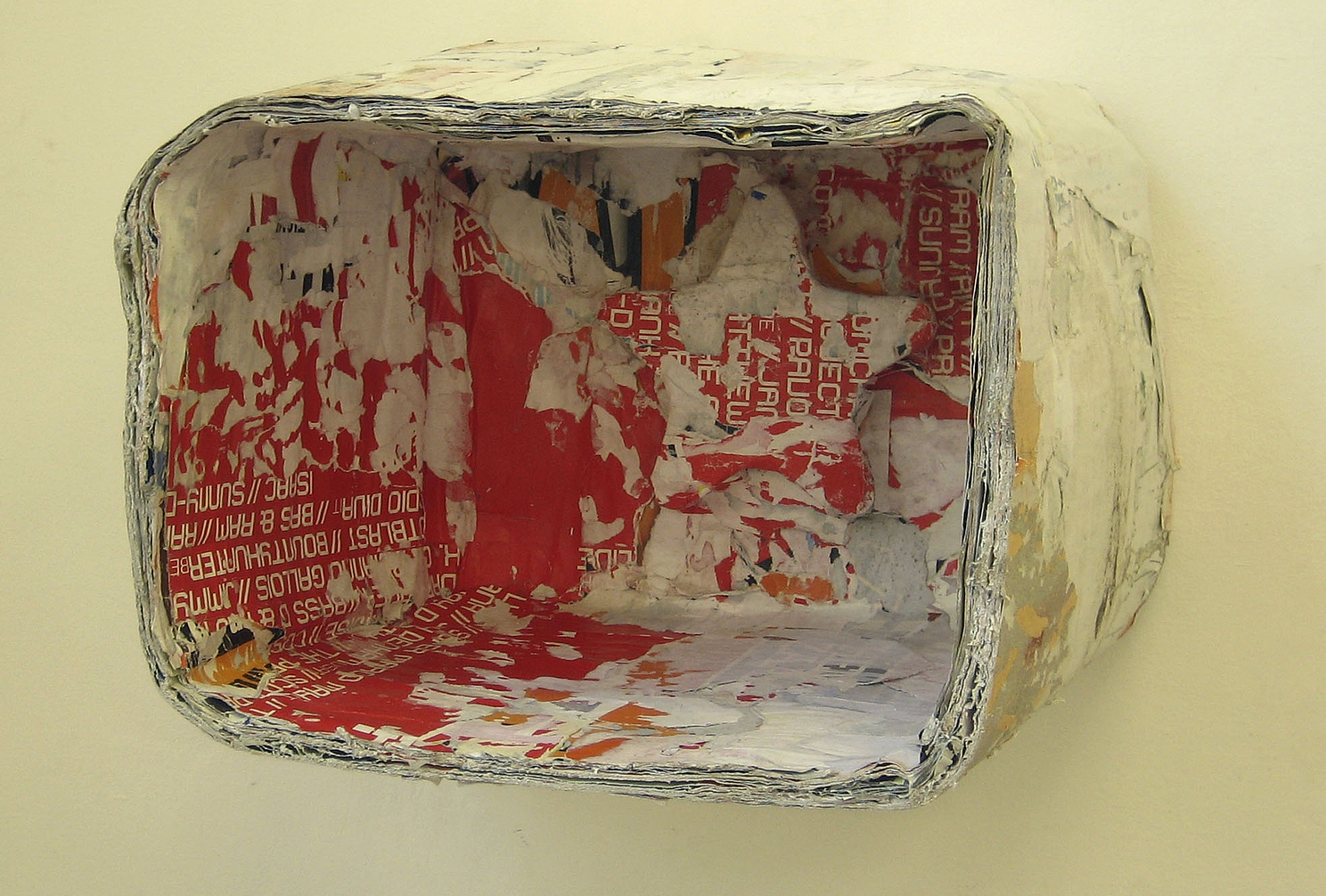Ellert Haitjema
Haphazard
31 July - 19 Sept 2010
In April 2010 the artist's book Haphazard by Ellert Haitjema (Menaldum, 1958) was published. That has led to an exhibition in the project space, where recent sculptures and photo-interventions by this artist will be shown this summer, along with the newly published book.
"Beautiful as the chance meeting, on a dissecting table, of a sewing machine and an umbrella," wrote Isidore Ducasse in 1869. The Surrealists turned this phrase from Les Chants de Maldoror into an artistic principle. Pure poetry can also come about in everyday life, through the surprising combination of objects and materials. Many examples of that can be found in the book Haphazard: the beam above the entrance to a house, which serves as the improvised storage place for a toothbrush; a shoe attached, like a paddle, to a cane; or a seatless wooden chair, whose frame wrapped in pink dress material brings to mind a life buoy.
No matter how much the objects and situations may indeed speak to the imagination, any artistic intention is foreign to them. If these amazing hodge-podges of materials and forms have an aesthetic appeal, then it is the inadvertent side effect of an intervention aimed at practical use.
Ellert Haitjema is fascinated by the inventiveness with which people get by when little is available. For years he has been recording, with his camera, their temporary shelters, makeshift repairs and mysterious objects adapted to specific needs. This often takes place during his travels to distant places, but it may also simply occur as he walks around his own neighborhood.
Initially the photographs were for his own use, as models and sources of inspiration for his sculptures. In Haphazard he combines these with his own work, in a dialogue full of visual rhyming and plays on words, free of any hierarchy or even a hint as to whether the image is his own work or an object photographed by him. That distinction is removed in the photo-interventions, which can be seen not only in the book, but also in the exhibition as independent works. Elaborating on visual elements suggested by the photographs themselves, Haitjema subjects them to a number of treatments. By folding the photographs, placing them in water or covering them with small plates of glass, he turns them into three-dimensional objects which he then photographs once again. The result is a two-dimensional image which resists careless observation due to its inconsistencies.
'Keen observation' and 'reckless thinking': these are key concepts in Haitjema's art. In his sculptures, too, he follows the path down which he is led by a careless/creative use of everyday objects. Part of this involves using discarded materials and having a preference for forms that suggest a vague function. The surface of his sculptures bears the marks of use and reuse; it brings attention to their subtle materiality.
They frequently have a certain fragile and vulnerable quality, but beneath that lies, just as with his sources of inspiration, an unexpected toughness. In the wall sculpture Urban Roots (2008) a strand of coarse fiber meanders through a rigid pattern of lines applied to the wall. The angular form of the strand creates a sense of estrangement, which turns into wonder once we realize that it makes up long tree roots which have worked their way past and around paving stones.
In his work Haitjema investigates a vigorous language of forms whose origins lie not in aesthetics, but in the urge to survive, from which it derives its beauty.
